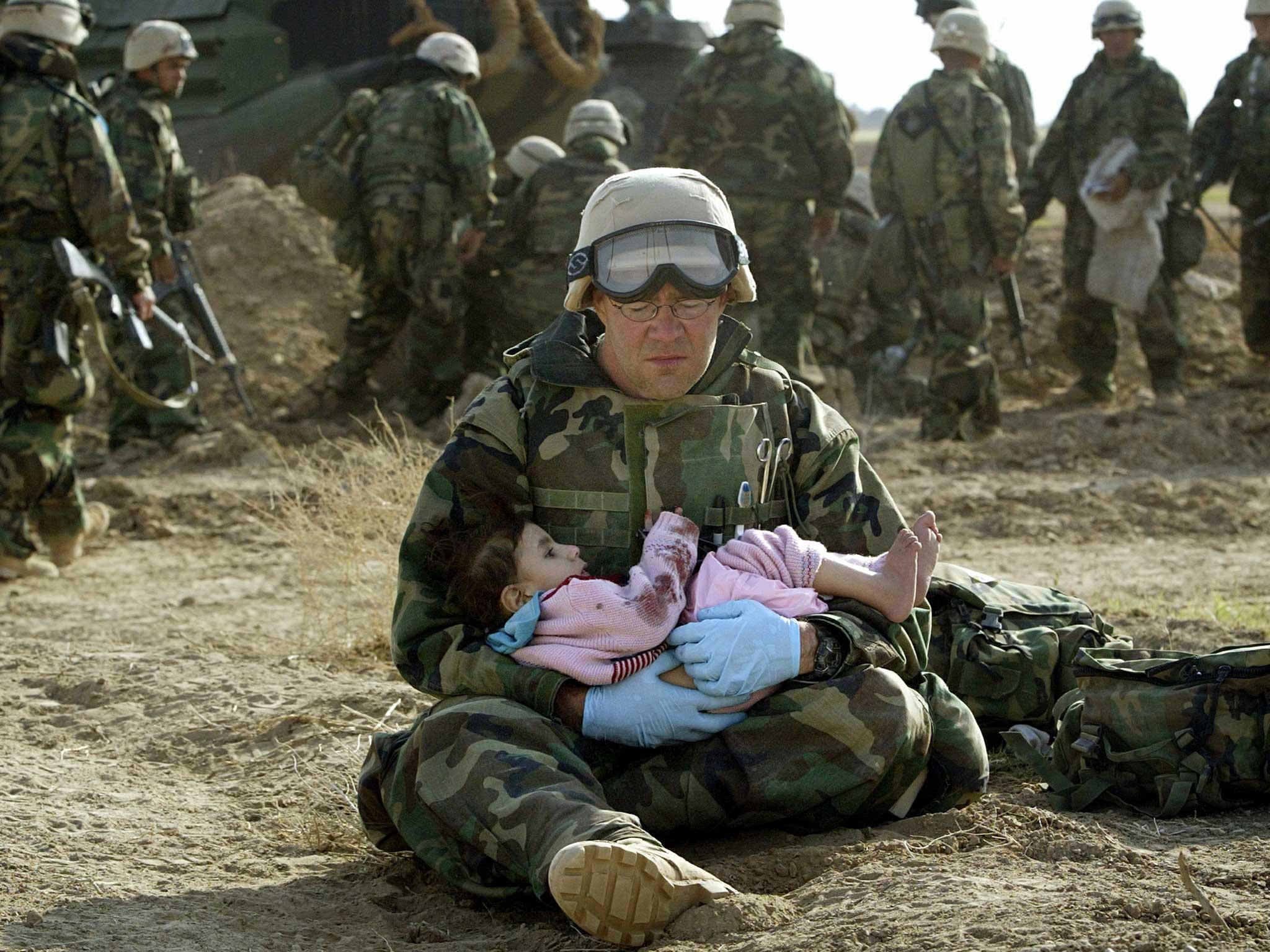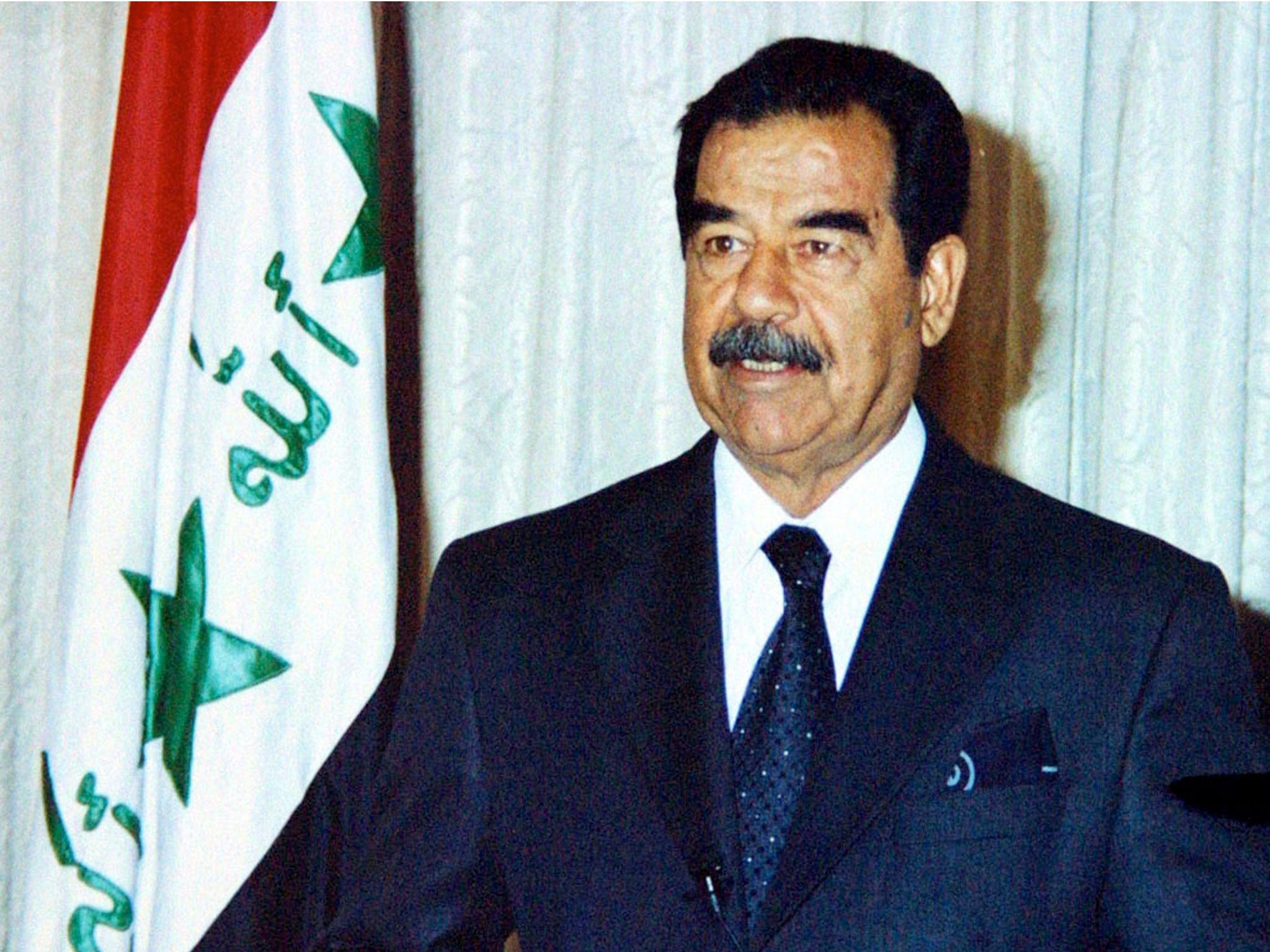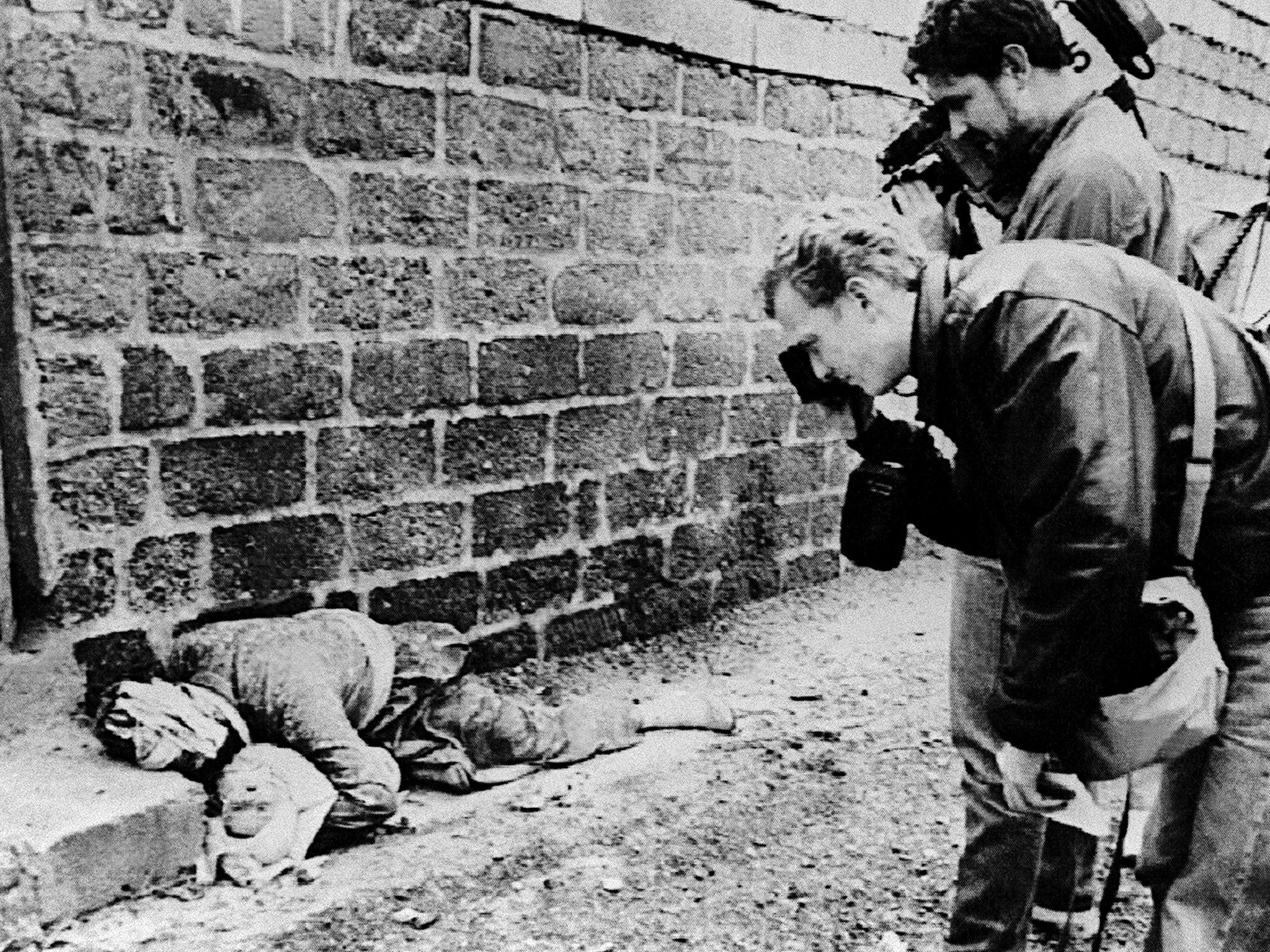Robert Fisk: In Iraq, ghosts provide the glue of unity in a story of survival - The Independent

On the road north of Amara, the storks have built their nests on top of the electricity pylons. Some of these aerial homes are more than six feet wide, a cluster of sticks and long grass at the top of the iron work by Mr Siemens’ descendants. From these fairy houses, the birds espy each other. You can also see their long beaks pointed down as they survey the tiny people of Iraq below them, driving sheep or – amazingly, in the early summer heat – waving green flags in the central reservation of the highway, inviting Shia Muslim pilgrims to stop for free food and water. This is a generous tradition and it is all true. Villagers really do gather beside the road and wave at the drivers heading north, many of them Iranians on their way to Najaf and Kerbala. I got caught in a traffic jam of pilgrims waiting to eat. Not a dinar is paid for this act of kindness.
Perhaps the storks, sweeping down from their pylons on their kite-like wings, appreciate the weird architecture of piety and money below, the human ability to build shrines of such blue- and white-tiled magnificence beside rows of grey garages and cheap concrete furniture stores, lining the old road towards Basra. Can we not create beauty and absolve ugliness from the countryside where the floodwaters are now seeping back into the land of the Marsh Arabs, “droughted” by Saddam in the terrible 1990s? But then I remember how the hovels of the poor were built right up against the European cathedrals of the Middle Ages. Perhaps one gives meaning to the other.
It is the same in the great shrine cities here. You can stumble your way through dust and exhaust fumes before you reach the burial place of the Imam Ali, the Prophet’s son-in-law. In Kerbala, the mosques of Hussain and Abbas nestle amid streets awash with grime and slaughtered animals hanging from hooks in fly-blown butchers’ shops. And yet I grew used to it.
We’ll tell you what’s true. You can form your own view.
From
15p
€0.18
$0.18
USD 0.27
a day, more exclusives, analysis and extras.
Each evening, I would take tea in a run-down cafe where old men smoked hookah pipes. And one evening, I dared to light a cigar which a friend had given me in Beirut. There was a middle-aged farmer sitting on my right. From where did this come, he asked?



U.S. Navy Hospital Corpsman HM1 Richard Barnett, assigned to the 1st Marine Division, holds an Iraqi child in central Iraq, March 29, 2003
Reuters
An explosion rocks Baghdad during air strikes March 21, 2003
Reuters
An Iraqi woman watches U.N. weapons inspectors leave Saddam airport in Baghdad March 18, 2003
Reuters
An Iraqi girl holds her sister as she waits for her mother (R) to bring over food bought in Basra March 29, 2003
Reuters
U.S. Marine Corp Assaultman Kirk Dalrymple watches as a statue of Iraq's President Saddam Hussein falls in central Baghdad's Firdaus Square, April 9, 2003
Reuters
US Marines kick in a door while securing a building next to the main hospital in central Baghdad April 15, 2003
Reuters
A soldier of U.S. Army's 4th Infantry Division (Task Force Ironhorse) searches through dense vegetation around the Diala river where Iraqi militants are hiding outside Baquba early November 13, 2003
Reuters
An Iraqi detainee gestures toward U.S. soldiers through bars of his cell at Abu Ghraib prison outside Baghdad May 17, 2004
Reuters
Mays, a young Iraqi Shi'ite girl, cries after a mortar shell which landed outside the family's home in a Najaf residential area injured her uncle August 18, 2004
Reuters
U.S. Marines carry an injured colleague to a helicopter near the city of Falluja, November 10, 2004
Reuters
An Iraqi man suspected of having explosives in his car is held after being arrested by the U.S army near Baquba, Iraq, October 15, 2005
Reuters
A wounded Iraqi woman is helped after several bomb attacks in central Baghdad, July 27, 2006
Reuters
A man runs down a street warning people to flee shortly after a twin car bomb attack at Shorja market in Baghdad, February 12, 2007
Reuters
An Iraqi girl holds her hands up while U.S. and Iraqi soldiers search her family house in Baquba early June 30, 2007
Reuters
An Iraqi woman tries to explain that she has nothing to do with illegal fuel as soldiers from the 2nd battalion, 32nd Field Artillery brigade patrol search for illegal fuel sellers in Baghdad August 6, 2007
Reuters
U.S. President George W. Bush (L) walks in front of Humvees with Defense Secretary Robert Gates (C) and Secretary of State Condoleezza Rice following remarks to the press after nightfall at Al-Asad airbase in Anbar Province September 3, 2007
Reuters
U.S. soldiers blindfold an Iraqi man after arresting him during a night patrol at the Zafraniya neighborhood, southeast of Baghdad September 4, 2007
Reuters
An Iraqi baby lies in a cradle while a woman argues with U.S. soldiers of 1/8 Bravo Company searching for weapons, explosives and information about militants in the area during a foot patrol in a neighbourhood of Mosul June 26, 2008
Reuters
Policemen cry during a funeral of their colleague a day after a bomb attack in Baghdad's Jihad district November 3, 2010
Reuters
Staff Sgt. Keith Fidler kisses his wife Cynthia, as their son Kolin looks on, during a homecoming ceremony in New York, April 8, 2011 for the New York Army National Guard's 442nd Military Police Company's return from Iraq
Reuters
U.S. Navy Hospital Corpsman HM1 Richard Barnett, assigned to the 1st Marine Division, holds an Iraqi child in central Iraq, March 29, 2003
Reuters
An explosion rocks Baghdad during air strikes March 21, 2003
Reuters
An Iraqi woman watches U.N. weapons inspectors leave Saddam airport in Baghdad March 18, 2003
Reuters
An Iraqi girl holds her sister as she waits for her mother (R) to bring over food bought in Basra March 29, 2003
Reuters
U.S. Marine Corp Assaultman Kirk Dalrymple watches as a statue of Iraq's President Saddam Hussein falls in central Baghdad's Firdaus Square, April 9, 2003
Reuters
US Marines kick in a door while securing a building next to the main hospital in central Baghdad April 15, 2003
Reuters
A soldier of U.S. Army's 4th Infantry Division (Task Force Ironhorse) searches through dense vegetation around the Diala river where Iraqi militants are hiding outside Baquba early November 13, 2003
Reuters
An Iraqi detainee gestures toward U.S. soldiers through bars of his cell at Abu Ghraib prison outside Baghdad May 17, 2004
Reuters
Mays, a young Iraqi Shi'ite girl, cries after a mortar shell which landed outside the family's home in a Najaf residential area injured her uncle August 18, 2004
Reuters
U.S. Marines carry an injured colleague to a helicopter near the city of Falluja, November 10, 2004
Reuters
An Iraqi man suspected of having explosives in his car is held after being arrested by the U.S army near Baquba, Iraq, October 15, 2005
Reuters
A wounded Iraqi woman is helped after several bomb attacks in central Baghdad, July 27, 2006
Reuters
A man runs down a street warning people to flee shortly after a twin car bomb attack at Shorja market in Baghdad, February 12, 2007
Reuters
An Iraqi girl holds her hands up while U.S. and Iraqi soldiers search her family house in Baquba early June 30, 2007
Reuters
An Iraqi woman tries to explain that she has nothing to do with illegal fuel as soldiers from the 2nd battalion, 32nd Field Artillery brigade patrol search for illegal fuel sellers in Baghdad August 6, 2007
Reuters
U.S. President George W. Bush (L) walks in front of Humvees with Defense Secretary Robert Gates (C) and Secretary of State Condoleezza Rice following remarks to the press after nightfall at Al-Asad airbase in Anbar Province September 3, 2007
Reuters
U.S. soldiers blindfold an Iraqi man after arresting him during a night patrol at the Zafraniya neighborhood, southeast of Baghdad September 4, 2007
Reuters
An Iraqi baby lies in a cradle while a woman argues with U.S. soldiers of 1/8 Bravo Company searching for weapons, explosives and information about militants in the area during a foot patrol in a neighbourhood of Mosul June 26, 2008
Reuters
Policemen cry during a funeral of their colleague a day after a bomb attack in Baghdad's Jihad district November 3, 2010
Reuters
Staff Sgt. Keith Fidler kisses his wife Cynthia, as their son Kolin looks on, during a homecoming ceremony in New York, April 8, 2011 for the New York Army National Guard's 442nd Military Police Company's return from Iraq
Reuters
1/20
2/20
3/20
4/20
5/20
6/20
7/20
8/20
9/20
10/20
11/20
12/20
13/20
14/20
15/20
16/20
17/20
18/20
19/20
20/20
1/20
2/20
3/20
4/20
5/20
6/20
7/20
8/20
9/20
10/20
11/20
12/20
13/20
14/20
15/20
16/20
17/20
18/20
19/20
20/20
From Cuba, I said. Two other men discussed this faraway location. Yes, they knew who Castro was, and I preferred to forget – the moment I remembered it – that Saddam had a liking for cigars. The three men debated this unlikely foreigner in their midst. One of them had a brother tortured and killed in Saddam’s prisons, another brother killed in the 1991 Shia insurrection. Then the farmer fumbled in the chest pocket of his robe and produced his mobile phone. All three surrounded me. They wanted a selfie with the foreigner and his cigar in the holy city of Kerbala.
I hesitate to recall how many times the Shias shook their heads in horror and grim wonderment at the memory of Saddam. We correspondents always fear the obvious headline – “Ghost of Saddam Still Looms over War-Torn Iraq” – when it was the Bush-Blair invasion which tore ancient Mesopotamia apart. But Saddam did indeed loom among the Shias.
An acquaintance of mine recalled his 10 years in Saddam’s prisons, watching through the bars as strange lights swished past the gratings in 1991. They were America’s Cruise missiles on their way to Baghdad.
And it is remarkable how often strange sparks of honour shine through these memories, from far-away, distant times when integrity and respect were as rare as they were under American occupation. Here, for example, are the words of an Iraqi friend, speaking of his long-dead father:
“In the early 1950s, the government was throwing the Jews out of Iraq. Tens of thousands of them were forced to sell their lands as cheaply as possible. And of course the Iraqis took advantage of this and bought lovely homes at ridiculously cheap prices. They virtually stole these houses from the Jews. But my father refused to do this. He offered to buy a house from a Jew but insisted that he paid the full price for it, what it would have been worth before the Jews started leaving. He even went to the bank with this man to ensure he received all the money that the house was worth. And, do you know, my father never told me about this? It was my aunt – his sister – who told me what my father had done, long after he was dead.”
And that same evening in Kerbala, I was reading through a bunch of French newspapers I had bought a couple of weeks before in Paris. I have a habit of squirreling away articles to read later. And – by extraordinary chance – I came across a review in Le Figaro of an exhibition about the sale of Jewish art in France under the Nazis between 1940 and 1944. And there was a photograph of the Galerie Charpentier in Paris in July 1944 – after D-Day, I reflected – in which the elite of Parisian society can be seen sitting in the front rows, surveying what appears to be a Renoir portrait.
In the picture, there are chic ladies in feathered hats and bespectacled businessmen with homburgs on their knees. The French, I thought, bought this Nazi loot at rates just as cheap as Iraqis did the Jewish houses of Baghdad in the early 1950s. In the French case, many of the Jews had already been exterminated. One estimate suggests that two million objects – works of art, vintage wine, whole buildings – were sold off under French occupation.
But my friend’s father had kept the faith of his family and, in racist Baghdad of the 1950s, had paid the real price for a Jewish home. It’s only one tale, I know, but it somehow repaid the hope that in a land of such suffering – under Saddam, and then under the Americans and their apparatchiks in the initial occupation governments, and then under attacks from the Isis cult – a profound dignity could still exist, the value of which my friend understood very well.
When we arrived in Baghdad next day, he waved his arms out of the car window across the baking expanse of the city. “It’s much safer, Robert. You can walk in the streets now. Even the Green Zone is open to traffic at night.”


